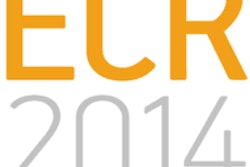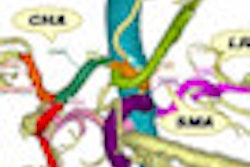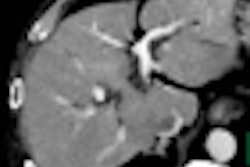A catheter-based device that drains contrast media from the heart after angiography and other interventional procedures have been completed could cut the risk of contrast-induced nephropathy (CIN), according to researchers from Australia.
In a small study of 26 patients, the concentration of contrast media in the blood was sharply reduced, along with the incidence of CIN, through the use of the device, the group wrote in a letter to the Journal of American College of Cardiology.
"Given the incidence of CIN and its clinical implications, there has been considerable interest in the development of strategies to reduce the risk of CIN," wrote Stephen Duffy, MD, PhD, and colleagues from the Baker IDI Heart and Diabetes Institute in Melbourne, Australia (JACC, August 3, 2010, Vol. 56:6, pp. 525-526).
Current methods to reduce the risk in vulnerable patients include hydration with saline or sodium bicarbonate and treatment with N-acetylcysteine, although the effectiveness of these strategies is controversial.
"Given the strong relationship between the volume of contrast media and CIN incidence, an alternate strategy is to limit the systemic contrast exposure," Duffy and his team wrote. "We therefore evaluated the possibility that renal contrast exposure could be limited by removing contrast-laden blood from the coronary sinus (CS) during and immediately after the intracoronary injection of contrast media."
Duffy and his co-investigators, including Peter Ruygrok, MD; Craig Juergens, MD; and David Kaye, MD, PhD, tested the Cincor contrast removal system (Osprey Medical, St. Paul, MN) for the aspiration of contrast media from the venous drainage area of the heart (coronary sinus) immediately after scans were acquired. The device is designed to remove contrast media before it is exposed to the kidneys and can cause damage, according to the company's website. Contrast-laden blood is discarded after interventional procedures.
Kaye disclosed that he is a founder and stockholder of Osprey Medical; two other investigators are also stockholders. Osprey's website states that the Cincor device is limited to investigational use in the U.S., and European availability is pending the receipt of a CE Mark.
The study assessed the safety and efficacy of the contrast removal process and examined its ability to limit the decline in renal function 72 hours after contrast exposures. The cohort included 26 patients with an estimated glomerular filtration rate (eGFR) of less than 60 mL/min who were evaluated for renal outcomes (five of the pilot-phase patients had normal renal function).
"Unlike other experimental studies of CS capture, we directly measured the concentration of iodine in the collected material using inductively coupled plasma-optical emission spectroscopy," the authors wrote.
The investigators placed a custom-designed 11-French CS aspiration catheter and coronary sinus support device via a 14-French right internal jugular vein sheath. The coronary sinus was successfully cannulated with the aspiration catheter in 31 of 41 patients in a mean time of 11.1 ± 9.3 minutes.
Coronary sinus contrast aspiration enabled the recapture of 32% ± 3% of the total delivered contrast (range, 6%-64%). There were no reports of serious adverse events related to the device. More to the point, the patients who underwent aspiration with the device had better-preserved renal function than a matched control group, the authors noted.
The 26 patients showed no change in eGFR from baseline to 72 hours postprocedure (41.8 ± 2.2 mL/min to 41.1 ± 2.3 mL/min, p = 0.55). But patients under standard care did: A matched group of 148 low-eGFR patients who did not have aspiration and received a similar contrast load experienced a statistically significant decrease in eGFR, from 42.7 ± 0.8 mL/min to 40.1 ± 0.9 mL/min (p < 0.001) at 48 hours, Duffy and colleagues reported.
"The present study provides supportive evidence of the safety and feasibility of a CS-based aspiration system for the removal of radiographic contrast in patients undergoing coronary angiography and intervention," the authors wrote. "Our data also provide a preliminary indication that the collection of contrast from the CS reduces systemic exposure and, in conjunction, attenuates expected nephrotoxicity."
Evaluation in a large-scale randomized trial is needed to evaluate the capacity of coronary sinus contrast capture to reduce the risk of contrast-induced nephropathy and its complications, the group concluded.
By Eric Barnes
AuntMinnie.com staff writer
September 13, 2010
Related Reading
ACR tackles NSF risk in new gadolinium MRI contrast guidance, June 17, 2010
ISCT speakers offer advice on managing CT contrast reactions, May 19, 2010
ACC: Cardiac cath contrast has low adverse reaction rates, March 17, 2010
Iodixanol and iopamidol show similar nephrotoxicity, November 25, 2009
Study: Iso-osmolar contrast not safer for kidneys, July 30, 2009
Copyright © 2010 AuntMinnie.com



















